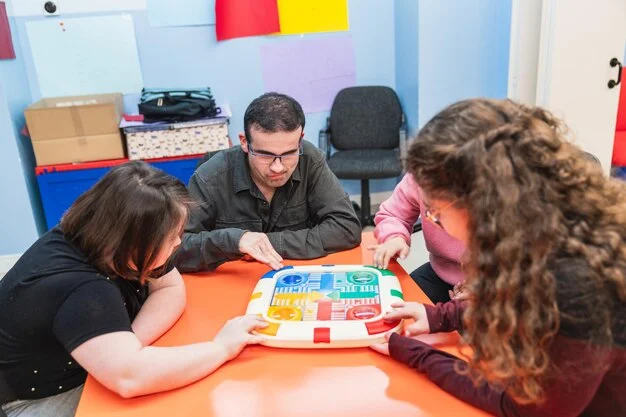Autism has often been boxed into narrow definitions, one-size-fits-all strategies, and outdated approaches. But that’s shifting. Today’s conversations around autism aren’t just about diagnosis or coping mechanisms—they’re about reshaping how we understand neurodiversity, support individuals, and create environments where everyone thrives. It’s not about “fixing” people; it’s about fostering connection, growth, and autonomy.
Rethinking the Narrative Around Autism
For years, the dominant story around autism focused on deficits—what someone couldn’t do. That narrative is fading fast. Instead of viewing autism as a list of limitations, more people recognize it as a unique way of experiencing the world. This shift isn’t just about semantics; it’s changing how educators, therapists, and families approach support.
We’re seeing more emphasis on strengths-based models. That means zeroing in on what someone excels at—whether it’s pattern recognition, creative problem-solving, or an incredible memory—and building from there. This approach doesn’t ignore challenges, but it reframes them in a way that promotes growth rather than focusing solely on gaps. The conversation has moved from “How do we make this person fit in?” to “How can we adapt our environment to support this person’s success?”
The Science of Support: Why Personalized Care Matters
The scientific understanding of autism has grown exponentially in the last decade. We now know that early intervention can make a significant difference, but the key isn’t just starting early—it’s choosing the right kind of support. This is where tailored, evidence-based strategies come into play.
ABA therapy services have become a game-changer for kids with autism because they focus on reinforcing positive behaviors while reducing those that interfere with learning or social interactions. But the field has evolved. Gone are the rigid, clinical environments; instead, many programs now incorporate play, natural settings, and activities that feel organic, not forced. The goal isn’t to create robotic compliance—it’s to help children communicate, engage, and thrive in their own authentic ways.
Families often report transformative outcomes—not just in their child’s ability to navigate daily tasks, but in their confidence, social skills, and emotional well-being. What makes these services effective isn’t just the method itself but how it’s adapted to each child’s unique needs, preferences, and developmental stage.
Beyond Childhood: Supporting Autistic Individuals Across the Lifespan
Autism doesn’t disappear with age, but support systems often do. That’s a problem. Adults with autism face unique challenges, from navigating the workplace to managing relationships. Unfortunately, many fall through the cracks after aging out of pediatric services.
The good news? This is starting to change. There’s growing recognition that autistic adults need—and deserve—ongoing support. Whether it’s job coaching, social skills groups, or access to personalized health services, the focus is shifting to long-term well-being. Companies are becoming more inclusive, too, not just through hiring initiatives but by creating work environments where neurodiverse employees can thrive without feeling pressured to mask their differences.
Universities and community colleges are also stepping up, offering programs designed to support neurodiverse students academically and socially. These programs go beyond accommodations like extra test time; they include mentoring, life skills coaching, and peer support networks that help students feel connected and empowered.
The Role of Technology: Bridging Gaps and Building Connections
Technology has always been a double-edged sword when it comes to autism. On one hand, too much screen time can create challenges, particularly around social development. On the other, technology offers powerful tools for learning, communication, and self-expression—especially for non-speaking individuals.
Apps designed to support communication can be life-changing, giving non-verbal individuals a voice. Virtual reality is being explored as a tool for teaching social skills in controlled, low-pressure environments. Even simple video modeling—watching videos of people performing tasks—can help individuals with autism learn new skills more effectively than traditional instruction alone.
Importantly, technology also connects families and professionals. Parents can access resources, online support groups, and teletherapy services no matter where they live, reducing the isolation that often comes with raising a child on the spectrum. It’s about meeting people where they are, both geographically and developmentally.
Changing Minds, One Conversation at a Time
One of the most significant shifts in autism support isn’t happening in clinics or classrooms—it’s happening in everyday conversations. Advocacy groups, self-advocates, and families are challenging outdated stereotypes and pushing for a more inclusive, accepting society. The message is simple but powerful: autism is a natural variation of the human experience, not a defect to be corrected.
Representation in the media is playing a role, too. When autistic characters are portrayed authentically—not as caricatures or plot devices—it helps dismantle myths and fosters greater understanding. Autistic voices are also taking center stage in these narratives, shifting the conversation from “about them” to “by them.”
Schools are becoming more inclusive, workplaces are adapting, and public spaces are considering sensory-friendly environments. Even small changes—like offering quiet hours at grocery stores or creating sensory-friendly movie screenings—can make a huge difference.
The Road Ahead
Autism support is no longer about fitting square pegs into round holes. It’s about recognizing that the holes come in all shapes and sizes—and so do the pegs. The future isn’t just about better therapies or smarter technologies (though those matter); it’s about creating a world where neurodiversity is seen as an asset, not an obstacle.
Progress isn’t always linear, and challenges remain. But as understanding grows, so does the potential for individuals with autism to live lives full of purpose, connection, and joy. That’s the shift that matters most—not just in how we support autistic people, but in how we value them.







